-
 Bitcoin
Bitcoin $118400
0.47% -
 Ethereum
Ethereum $3836
2.20% -
 XRP
XRP $3.157
2.98% -
 Tether USDt
Tether USDt $0.9999
-0.03% -
 BNB
BNB $801.5
1.31% -
 Solana
Solana $180.9
2.07% -
 USDC
USDC $0.9999
-0.02% -
 Dogecoin
Dogecoin $0.2225
2.50% -
 TRON
TRON $0.3285
-1.02% -
 Cardano
Cardano $0.7789
2.60% -
 Hyperliquid
Hyperliquid $43.60
2.39% -
 Sui
Sui $3.892
4.41% -
 Stellar
Stellar $0.4229
3.34% -
 Chainlink
Chainlink $18.01
3.98% -
 Hedera
Hedera $0.2745
6.77% -
 Bitcoin Cash
Bitcoin Cash $582.3
3.38% -
 Avalanche
Avalanche $23.77
1.04% -
 Ethena USDe
Ethena USDe $1.001
0.01% -
 Toncoin
Toncoin $3.493
3.59% -
 Litecoin
Litecoin $110.0
2.48% -
 UNUS SED LEO
UNUS SED LEO $8.936
-0.37% -
 Shiba Inu
Shiba Inu $0.00001304
2.49% -
 Uniswap
Uniswap $9.999
1.09% -
 Polkadot
Polkadot $3.897
3.26% -
 Monero
Monero $308.6
-0.83% -
 Dai
Dai $0.9999
-0.01% -
 Bitget Token
Bitget Token $4.504
-0.04% -
 Pepe
Pepe $0.00001154
2.95% -
 Cronos
Cronos $0.1471
3.06% -
 Ethena
Ethena $0.6691
19.53%
Monthly line breaks through the long-term consolidation range and the daily line shrinks and steps back to buy point
A monthly breakout from long-term consolidation signals strong bullish momentum, especially when confirmed by volume and followed by a healthy daily contraction and pullback to key support.
Jul 30, 2025 at 12:35 am
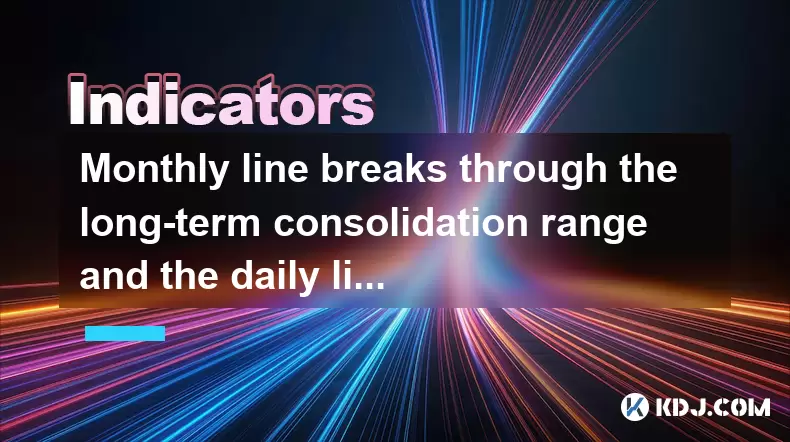
Understanding the Monthly Line Breakout from Long-Term Consolidation
When the monthly line breaks through a long-term consolidation range, it signals a powerful shift in market structure. Consolidation occurs when price action moves sideways over an extended period, typically indicating indecision or balance between buyers and sellers. A breakout from this range on the monthly chart suggests that one side has gained control—usually bulls in an upward breakout. This type of breakout carries significant weight because the monthly timeframe reflects long-term investor sentiment and institutional participation.
The breakout level becomes a key support or resistance zone once price moves beyond it. Traders often look for confirmation that the breakout is valid, which may include increased volume, follow-through candles, or closing prices beyond the consolidation boundary. A confirmed monthly breakout can lead to sustained directional movement, especially if it aligns with broader macroeconomic or on-chain fundamentals in the cryptocurrency space.
It’s crucial to analyze the duration and width of the consolidation. A range lasting 6–12 months or longer with multiple touchpoints at support and resistance adds credibility to the eventual breakout. Cryptocurrencies like Bitcoin or Ethereum often exhibit such patterns before major bull runs. Traders use tools like horizontal lines and Fibonacci extensions to project potential targets post-breakout.
Daily Chart Contraction and Its Significance
After a strong monthly breakout, the daily chart often shows a contraction in price movement, referred to as "shrinking." This contraction usually manifests as narrowing candle ranges, lower volatility, and reduced trading volume. It reflects a period of digestion where early gains are consolidated before the next leg up.
This phase is not a sign of weakness but rather a healthy correction. The market absorbs selling pressure from short-term traders cashing out while allowing new participants to enter at better prices. The shrinking action on the daily chart can form patterns such as symmetrical triangles, flags, or small-range candles clustering near the breakout level.
Traders watch for tightening price bands and decreasing ATR (Average True Range) as indicators of contraction. Bollinger Bands may also move closer together, signaling reduced volatility. Once price begins to expand again with strong momentum candles, it often confirms the resumption of the uptrend initiated by the monthly breakout.
Identifying the Buy Point After the Pullback
A pullback to the buy point occurs when price retraces toward the original breakout level after the initial surge. This level, once a resistance, now acts as support due to the principle of role reversal. The ideal buy point is near this retested zone, especially if accompanied by bullish confirmation signals.
To pinpoint the buy point accurately:
- Draw a horizontal line at the upper boundary of the long-term consolidation range.
- Wait for price to return to this level on the daily chart.
- Look for bullish reversal candlestick patterns such as hammer, bullish engulfing, or morning star.
- Confirm with support from moving averages, such as the 50-day or 200-day EMA aligning near the same zone.
- Ensure that volume increases on the reversal candle, indicating renewed buying interest.
Entry can be executed using a limit order just above the reversal candle’s high or after a break of a short-term resistance level formed during the pullback. Risk management is critical—place a stop-loss below the support zone, typically 3–5% under the buy point, depending on volatility.
Using Technical Indicators to Confirm the Setup
Multiple technical indicators can enhance confidence in this trading setup. The Relative Strength Index (RSI) should ideally dip into neutral territory (40–50) during the pullback and then turn upward, avoiding oversold extremes that may suggest deeper corrections.
The MACD (Moving Average Convergence Divergence) can show a bullish crossover as the pullback ends. Watch for the signal line crossing above the MACD line while both are near the zero mark. Histogram bars turning positive again support bullish momentum resumption.
Volume analysis is equally important. Use the On-Balance Volume (OBV) indicator to check whether accumulation is occurring during the pullback. Rising OBV despite sideways price action indicates smart money is buying.
Additionally, consider the Ichimoku Cloud. If the daily price remains above the cloud and the Chikou span avoids crossing below price, the trend remains intact. A re-entry above the cloud after a shallow pullback adds confirmation.
Practical Execution: Step-by-Step Trade Management
Executing this strategy requires precision and discipline. Follow these steps to manage the trade effectively:
- Monitor the monthly chart to confirm the breakout has occurred and is holding.
- Switch to the daily chart and wait for price to pull back toward the breakout level.
- Identify confluence factors such as moving averages, Fibonacci retracement levels (38.2% or 50%), and candlestick reversals.
- Set entry with a buy limit order near the confluence zone.
- Place a stop-loss order below the recent swing low or below the consolidation breakout level.
- Use a trailing stop or partial profit-taking strategy as price moves in your favor.
- Adjust position size based on account risk—never risk more than 1–2% per trade.
Track on-chain data via platforms like Glassnode or CryptoQuant to ensure that exchange outflows or whale accumulation supports the bullish narrative. High exchange reserves or rising sell pressure could invalidate the setup.
Common Misinterpretations and How to Avoid Them
One common mistake is mistaking a fake breakout for a genuine one. A false breakout occurs when price briefly moves beyond the consolidation range but quickly reverses back inside. To avoid this, wait for a close outside the range, preferably with strong volume and follow-through in the next few candles.
Another error is entering too early during the pullback. Some traders buy as soon as price starts declining, anticipating the bounce. This risks catching a falling knife. Always wait for clear reversal signals and confirmation.
Also, ignore setups where the daily contraction lacks volume support. Low-volume pullbacks can extend further than expected. Ensure that the asset remains in strong overall market conditions—avoid trading against the broader sector trend.
Frequently Asked Questions
What if the price breaks below the buy point after I enter?
If price closes below the buy point with strong volume, it may indicate a failed breakout. The stop-loss should trigger automatically. Review the monthly chart to see if the breakout level has been decisively violated. If so, exit and reassess.
Can this strategy be applied to altcoins?
Yes, but with caution. Altcoins often follow Bitcoin’s lead. Ensure the broader market is in a bullish phase. Choose altcoins with strong fundamentals and high liquidity. Verify that the consolidation pattern is clearly defined and not part of a choppy, sideways market.
How long should I wait for the pullback to complete?
There’s no fixed timeline. Some pullbacks last 3–5 days, others extend for weeks. Use technical signals rather than time. If price stalls near the buy zone with bullish candlesticks and rising volume, it’s a valid setup. If price continues downward with strong bearish momentum, the opportunity may be invalid.
Is volume more important on the monthly or daily chart in this setup?
Volume confirmation is critical on both timeframes. On the monthly chart, high volume validates the breakout. On the daily chart, rising volume on the reversal candle confirms buyer interest. Lack of volume on either timeframe increases the risk of failure.
Disclaimer:info@kdj.com
The information provided is not trading advice. kdj.com does not assume any responsibility for any investments made based on the information provided in this article. Cryptocurrencies are highly volatile and it is highly recommended that you invest with caution after thorough research!
If you believe that the content used on this website infringes your copyright, please contact us immediately (info@kdj.com) and we will delete it promptly.
- Pudgy Penguins Price Prediction: Buying Opportunity or Insider Dump?
- 2025-07-31 18:50:35
- Penny Coin Power: Unearthing 20x Potential in Undervalued Crypto
- 2025-07-31 20:10:14
- Shrapnel, GalaChain, and China Gaming: A New Frontier
- 2025-07-31 19:10:35
- Mutuum Finance, Bitcoin, and Market Analysis: Decoding the Latest Trends
- 2025-07-31 19:30:13
- Dogecoin Howl: Bullish Signals and Analyst Bites – Is the Meme Coin Ready to Pounce?
- 2025-07-31 18:30:16
- Decoding Crypto Presales, Ethereum's Role, and Navigating a Tricky Altcoin Season
- 2025-07-31 18:30:16
Related knowledge
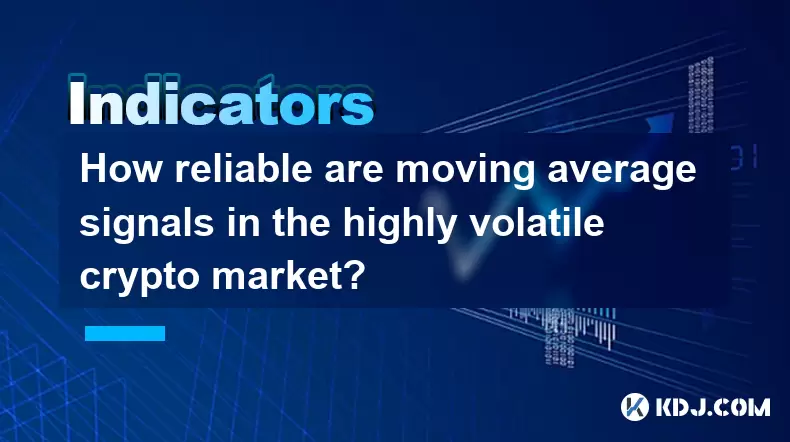
How reliable are moving average signals in the highly volatile crypto market?
Jul 31,2025 at 08:36pm
Understanding Moving Averages in Cryptocurrency TradingMoving averages (MAs) are among the most widely used technical indicators in the cryptocurrency...
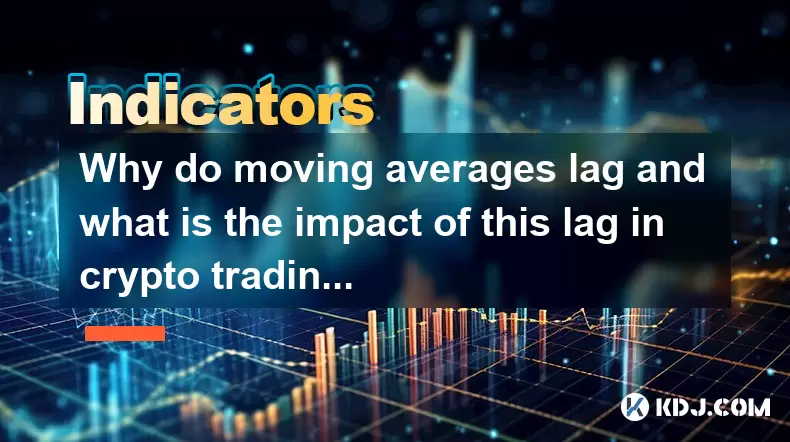
Why do moving averages lag and what is the impact of this lag in crypto trading?
Jul 31,2025 at 08:07pm
Understanding the Concept of Moving Averages in Crypto TradingMoving averages are among the most widely used technical indicators in cryptocurrency tr...
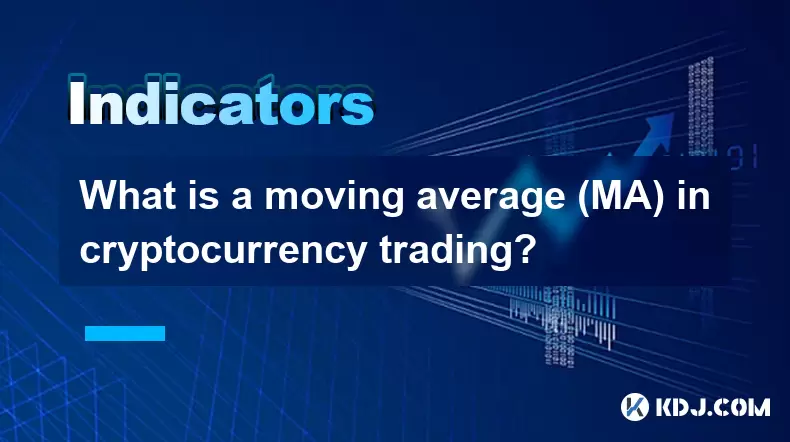
What is a moving average (MA) in cryptocurrency trading?
Jul 31,2025 at 06:30pm
Understanding the Concept of Moving Average (MA)A moving average (MA) is a widely used technical analysis tool in cryptocurrency trading that helps sm...
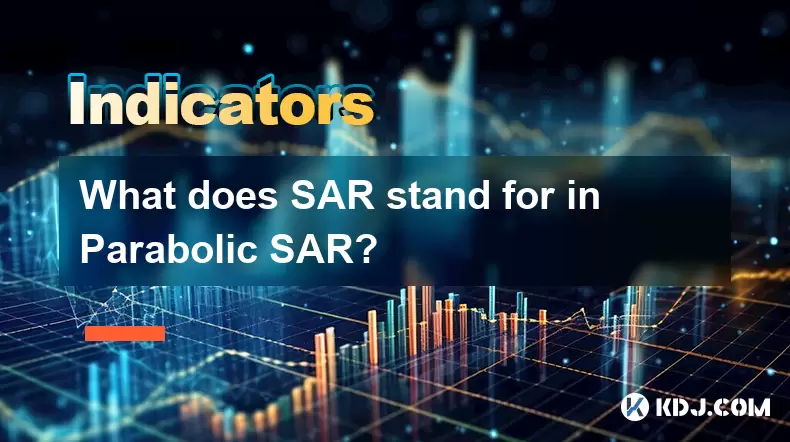
What does SAR stand for in Parabolic SAR?
Jul 31,2025 at 06:49pm
Understanding the Meaning of SAR in Parabolic SARIn the context of technical analysis in the cryptocurrency market, SAR stands for 'Stop and Reverse' ...
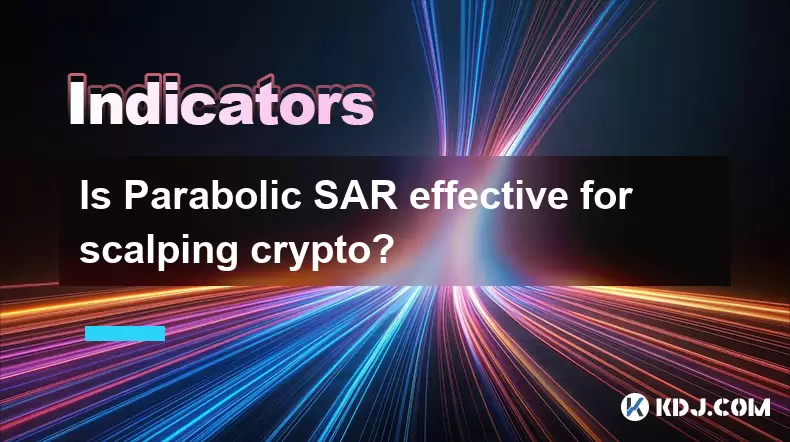
Is Parabolic SAR effective for scalping crypto?
Jul 31,2025 at 08:29pm
Understanding Parabolic SAR in Cryptocurrency TradingThe Parabolic SAR (Stop and Reverse) is a technical indicator developed by J. Welles Wilder, prim...
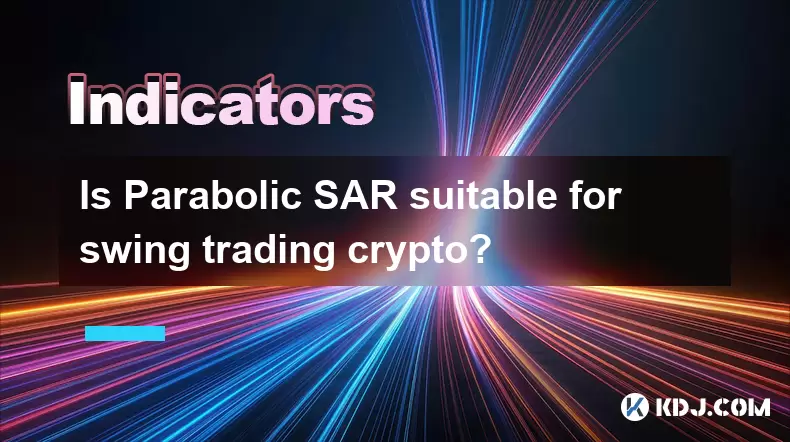
Is Parabolic SAR suitable for swing trading crypto?
Jul 31,2025 at 05:29pm
Understanding Parabolic SAR in Cryptocurrency TradingThe Parabolic SAR (Stop and Reverse) is a technical indicator developed by J. Welles Wilder that ...

How reliable are moving average signals in the highly volatile crypto market?
Jul 31,2025 at 08:36pm
Understanding Moving Averages in Cryptocurrency TradingMoving averages (MAs) are among the most widely used technical indicators in the cryptocurrency...

Why do moving averages lag and what is the impact of this lag in crypto trading?
Jul 31,2025 at 08:07pm
Understanding the Concept of Moving Averages in Crypto TradingMoving averages are among the most widely used technical indicators in cryptocurrency tr...

What is a moving average (MA) in cryptocurrency trading?
Jul 31,2025 at 06:30pm
Understanding the Concept of Moving Average (MA)A moving average (MA) is a widely used technical analysis tool in cryptocurrency trading that helps sm...

What does SAR stand for in Parabolic SAR?
Jul 31,2025 at 06:49pm
Understanding the Meaning of SAR in Parabolic SARIn the context of technical analysis in the cryptocurrency market, SAR stands for 'Stop and Reverse' ...

Is Parabolic SAR effective for scalping crypto?
Jul 31,2025 at 08:29pm
Understanding Parabolic SAR in Cryptocurrency TradingThe Parabolic SAR (Stop and Reverse) is a technical indicator developed by J. Welles Wilder, prim...

Is Parabolic SAR suitable for swing trading crypto?
Jul 31,2025 at 05:29pm
Understanding Parabolic SAR in Cryptocurrency TradingThe Parabolic SAR (Stop and Reverse) is a technical indicator developed by J. Welles Wilder that ...
See all articles

























































































